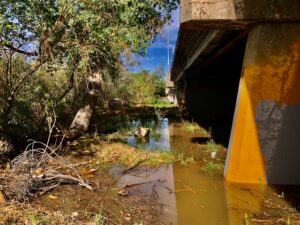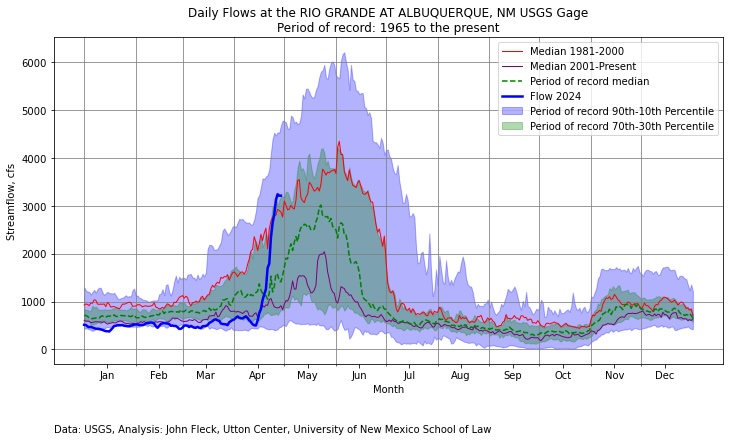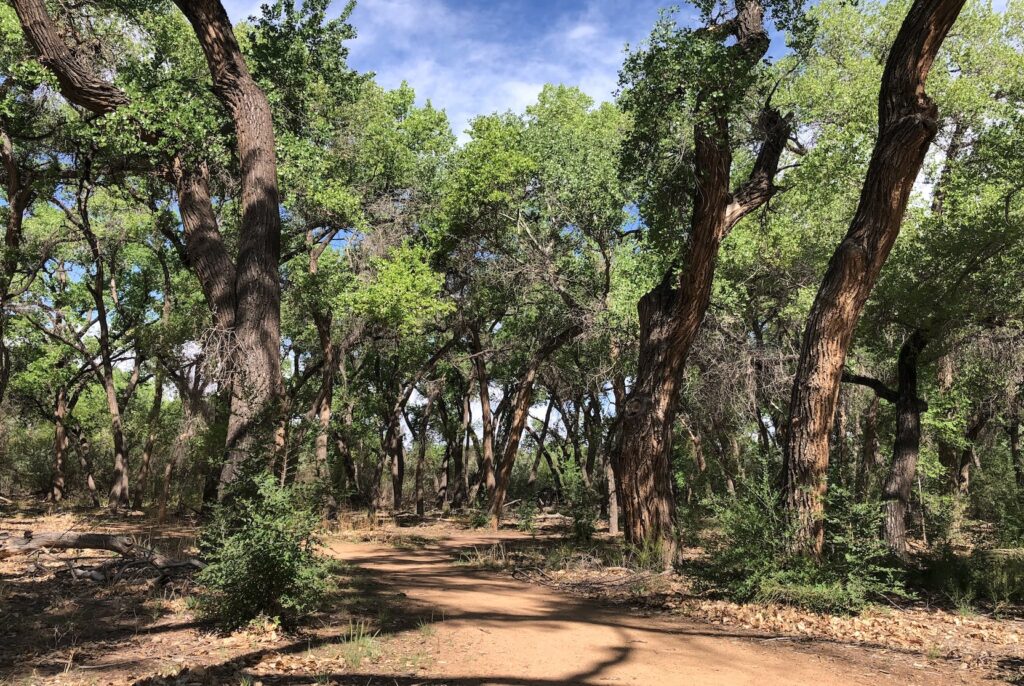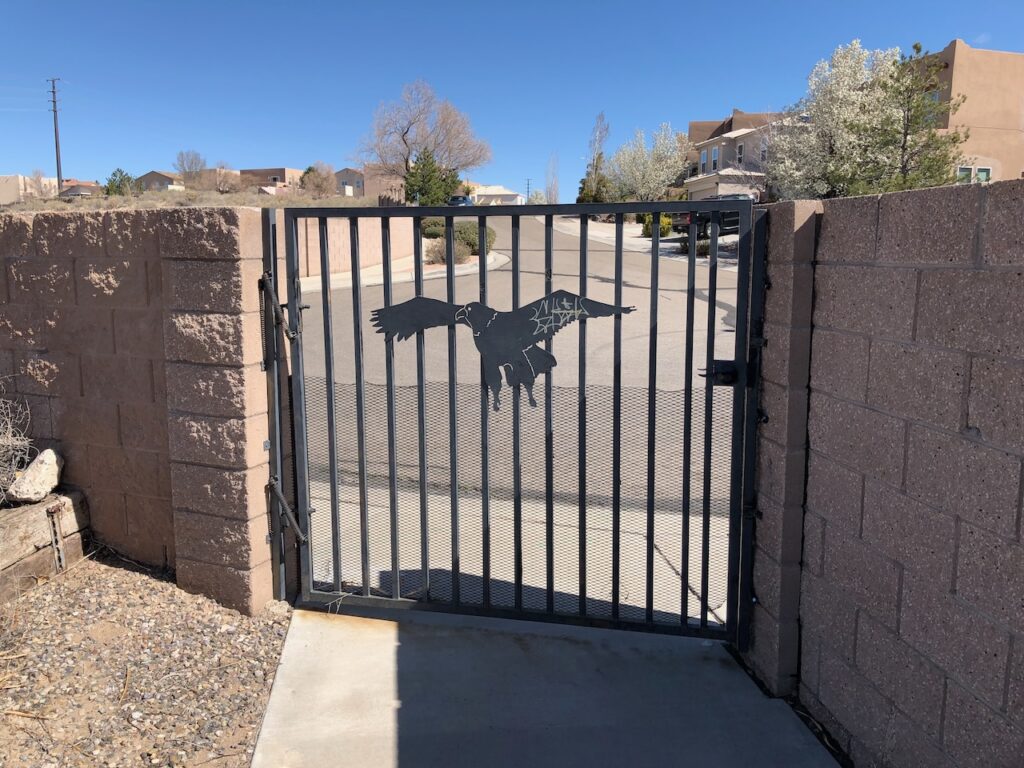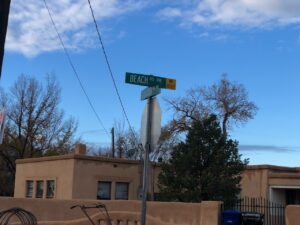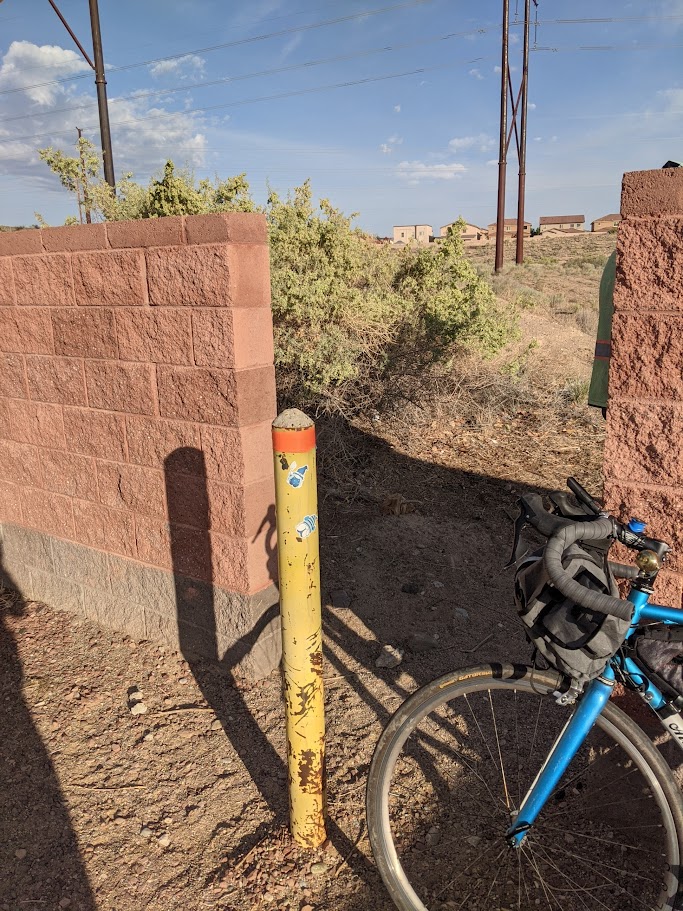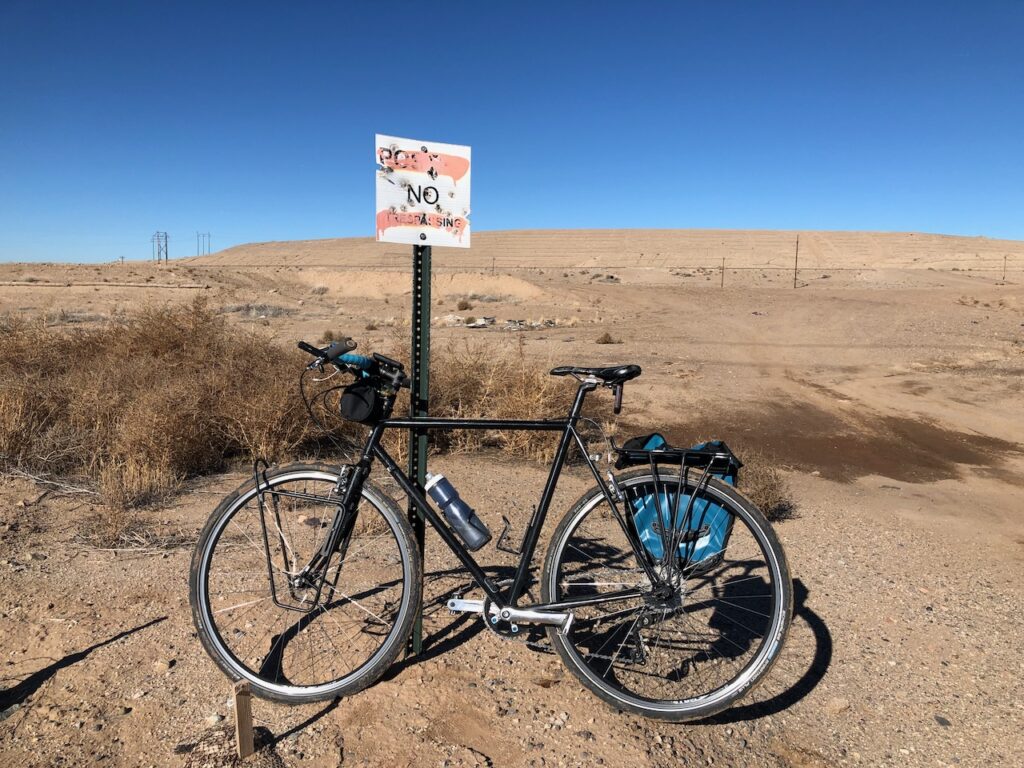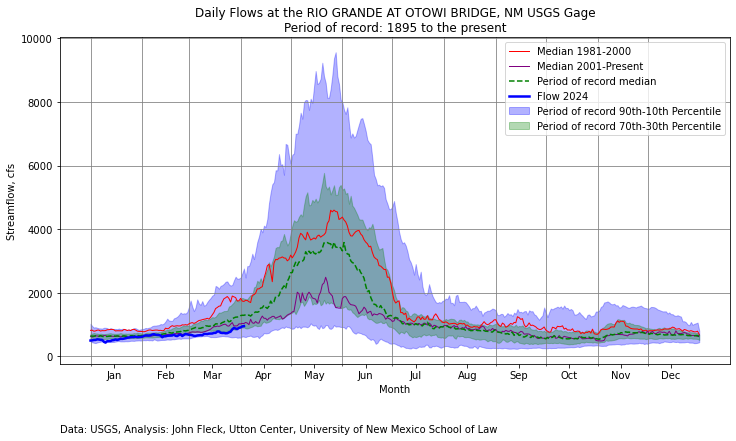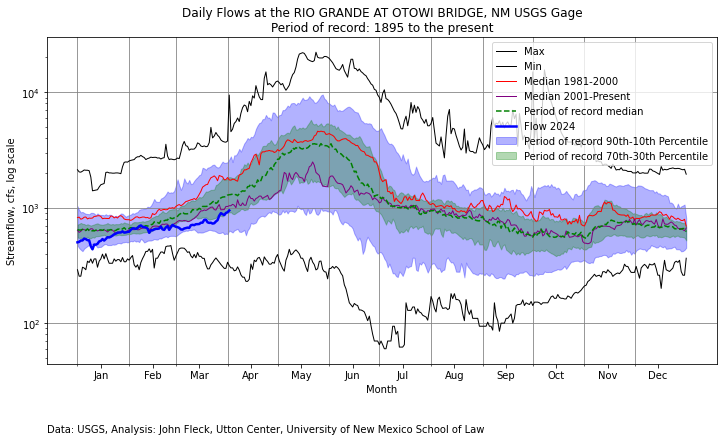By Eric Kuhn
Given how far apart the competing proposals from the Colorado River Upper and Lower Division States are, a legitimate question is – “what happens if we get to the summer of 2026 and there is still no agreement on the post-2026 operational guidelines?” Well, believe it or not, that is a question upon which the seven basin states and the Secretary of the Interior already agree. The Upper Division States made the following comment in their proposal:
“As of the date of this submittal, Reclamation has not disclosed the No Action Alternative for this EIS. The No Action Alternative must acknowledge that, upon expiration of the 2007 Interim Guidelines, the operating criteria for Lake Powell and Lake Mead will revert to the Long-Range Operating Criteria (LROC) used to model baseline conditions in the Final Environmental Impact Statement for the Interim Surplus Guidelines dated December 2000.”
The language quoted by the Upper Division States letter comes from the Record of Decision (RoD) for 2007 Interim Guidelines (Section 8. C.). This termination language was included with the consent of the states. So, the obvious questions are – if the operating criteria are to revert to the LROC, what are the LROC, and what specifically do they mean for the operation of Lakes Mead and Powell?
What is the LROC?
The long-range coordinated operating criteria or “LROC” are a requirement of the 1968 Colorado River Basin Project Act, the federal legislation that, among many other things, authorized the Central Arizona Project (CAP). Prior to the creation of the 2007 Interim Guidelines for the coordinated operation of Glen Canyon and Hoover dams, the LROC created the framework for determining how much water to release from Lake Powell to Lake Mead each year.
The 60s were a turbulent decade for the Colorado River Basin. In 1962 Flaming Gorge and Navajo Reservoirs began filling, then in 1963, Lake Powell began filling. To manage the filling of over 30 million acre-feet of vacant space (25 maf in Lake Powell), in 1962 the Secretary issued filling criteria. And, as luck would have it, the 1960s were relatively dry. The filling criteria were controversial in both basins. A significant concern was power generation. The Upper Basin wanted to fill the reservoirs as fast as possible so the Upper Basin fund would begin accruing revenues that would be used to subsidize irrigation projects under the 1956 Colorado Storage Project Act. The Lower Basin was concerned with the impact of power generation at Hoover Dam – the revenues from which were being used to repay the federal treasury for Hoover Dam and other projects on the lower river.
The Upper Division States became concerned that the Lower Division States would continually interfere with the storage of water in the Upper Basin Reservoirs using Article III(e) of the Colorado River Compact, which states:
“The States of the Upper Division shall not withhold water, and the States of the Lower Division shall not require the delivery of water, which cannot reasonably be applied to domestic and agricultural uses.”
The Upper Division States (via the UCRC) decided they needed to use the federal legislation then pending before Congress to authorize the CAP to clarify the rules under which water would be stored and released from Lake Powell and the other CRSP storage reservoirs. A critical question that needed to be answered was how much holdover storage the Upper Division States would need to meet their compact obligations under Articles III(c) and III(d) of the compact. This was a difficult question to answer given that the two basins had very different interpretations of these provisions, especially the obligation off the Upper Division States to Mexico under the 1944 Treaty. Today the two basins still have very different interpretations of these provisions.
The specific language of Section 6 of the 1968 Act was negotiated by the states with input from Reclamation. With Congressman Aspinall (the House Interior and Insular Affairs Committee Chair from Western Colorado) insisting that operating language be included in any legislation, the UCRC had the better hand. Colorado’s Felix Sparks (its CWCB Director and UCRC Commissioner) said “we wrote every word of Section 6.”
The requirement for the LROC is included in Section 602(a):
“SEC. 602 (a) In order to comply with and carry out the provisions of the Colorado River Compact, the Upper Colorado River Basin Compact, and the Mexican Water Treaty, the Secretary shall propose criteria for the coordinated long-range operation of the reservoir constructed and operated under the authority of the Colorado River Storage Project Act, the Boulder Canyon Project Act, and the Boulder Canyon Project Adjustment Act. To effect in part the purposes expressed in this paragraph, the criteria shall make provision for the storage of water in storage units of the Colorado River storage project and releases of water from Lake Powell in the following listed order of priority:
(1) releases to supply one-half the deficiency described in article III (c) of the Colorado River Compact, if any such deficiency exists and is chargeable to the States of the Upper Division, but in any event such releases, if any, shall not be required in any year, that the Secretary makes the determination and issues the proclamation specified in section 202 of this Act;
(2) releases to comply with article III(d) of the Colorado River Compact, less such quantities of water delivered into the Colorado River below Lee Ferry to the credit of the States of the Upper Division from other sources; and
(3) storage of water not required for the releases specified in clauses (1) and (2) of this subsection to the extent that the Secretary, after consultation with the Upper Colorado River Commission and representatives of the three Lower Division States and taking into consideration all relevant factors (including, but not limited to, historic stream-flows, the most critical period of record, and probabilities of water supply), shall find this to be reasonably necessary to assure deliveries under clauses (1) and (2) without impairment of annual consumptive uses in the upper basin pursuant to the Colorado River Compact: Provided, That water not so required to be stored shall be released from Lake Powell: (i) to the extent it can be reasonably applied in the States of the Lower Division to the uses specified in Article III(e) of the Colorado River Compact, but no such releases shall be made when the active storage in Lake Powell is less than the active storage in Lake Mead, (ii) to maintain, as nearly as practicable, active storage in Lake Mead equal to the active storage in Lake Mead, but no such releases shall be made when the active storage in Lake Powell is less than the active storage in Lake Mead, (ii) to maintain, as nearly as practicable, active storage in Lake Mead equal to the active storage in Lake Powell, and (iii) to avoid anticipated spills from Lake Powell.”
Section 602(b) required that the Secretary submit draft criteria to the states by January 1, 1970, and, after receipt of comments, adopt criteria by July 1, 1970.
The language of the first two priorities for releases from Glen Canyon Dam appears straight forward, but there are still implementation questions. The first priority is to release water to meet the obligation of the Upper Division States to Mexico, if any. Today, the Upper Division States believe they have no obligation to Mexico, but the Lower Division States believe it’s at least 750,000 af per year. Thus, lacking either an agreement among the states or an interpretation of Article III(c) by the Supreme Court, this priority is unquantified. The second priority is to meet the Upper Division State’s 75 maf every ten years non-depletion obligation under III(d). It’s an average of 7.5 maf per year, but the language does not require a specific flow amount in any one year. To add uncertainty, the Upper Division States believe that if climate change, not Upper Basin depletions, is a cause of ten-year flows falling below 75 maf, there is no violation of Article III(d).
The third priority is more complicated (perhaps convoluted). It’s designed to address the question of how much holdover storage the Upper Basin can keep in the Lake Powell and the other CRSP reservoirs. Although the language may be confusing, the intent is simpler. The Upper Basin may keep as much storage as the Secretary determines necessary to allow the States of the Upper Division to meet their compact obligations during the most critical drought of record. If there is more than that amount in storage, then they must share the extra water with the Lower Basin, but only to the extent necessary to equalize active storage in Lakes Mead and Powell. Thus, was borne the term “equalization.”
After the 1968 Act passed, the Department of the Interior immediately began an effort to prepare a draft LROC. The effort involved a federal-state task force. It also involved the first comprehensive use of a computer to simulate numerous different reservoir operational scenarios (I wonder how many of us still remember the days of computer punch-card decks?). Interior officials quickly realized that the effort was going to be complicated and contentious. For Interior’s version of the events, see Chapter VII of the 1978 version of the Hoover Dam Documents. The contentious issues were the annual release amount from Glen Danyon Dam and how to calculate the amount of allowable holdover storage (now commonly referred to as “602(a) storage”). Colorado’s Felix Sparks put it this way: “Everything we do at Glen Canyon Dam is ultimately about the Colorado River Compact.”
After numerous meetings and conferences, on June 9, 1970, Secretary Walter Hickel formally approved the first LROC. Much of the language parroted the 1968 Act provisions for the CRSP reservoirs and for Lake Mead, the language of the 1964 decree implementing the 1963 decision in Arizona v. California. For the Upper Division States, however, the Secretary made three decisions that they strongly opposed. First, the LROC included a provision for an annual “minimum objective release” from Glen Canyon Dam of 8.23 maf. The problem was that this number was derived as 7.5 maf plus 750 kaf (the LB’s interpretation of the UB’s Mexican Treaty obligation) less 20 kaf (the mean flow of the Paria River). The Secretary accepted recommendations from the UCRC for language clarifying that the minimum objective release was an “objective” not a “requirement” and that the Secretary was not interpreting the Compact. The second problem was that the Secretary rejected their recommendation that a probability rule curve be used to set the 602(a) level. Instead, the Secretary determined that the 602 (a) level would be set on an annual basis. Finally, with the adoption of the LROC, the UCRC recommended that the lake Powell filling criteria be terminated. The problem with the filling criteria from the Upper Division States perspective was that it required revenues from power generation at the CRSP units be used to keep the Lower Basin whole for the impact of filling Lake Powell on power generation at Hoover Dam. The Secretary rejected this recommendation and the filling criteria stayed in effect through 1980.
The rejection of its important recommendations left the UCRC members bitter. New Mexico State Engineer and UCRC Commissioner, Steve Reynolds, put in his plain-spoken language – “they crammed it down our throats” (expletive deleted).
So what happens if we continue to use the LROC?
So, the big question is – if there is no agreement on post-2026 operating guidelines between the basins and the Secretary determines that the annual operation of Lakes Mead and Powell for Water Year 2027 (and perhaps beyond) will be guided by the LROC, what does this mean for the reservoirs? For Lake Powell, the answer may be not much. It means an annual release of 8.23 maf (or perhaps 8.1 maf -taking into account the river inflows immediately below the dam). Depending on the runoff in 2025 and 2026, there’s a reasonable chance that this would be the amount released under a continuation of the 2007 Interim Guidelines. The differences are that there would be no balancing of the storage levels in Lakes Mead and Powell as is allowed by the three balancing tiers of the 2007 Interim Guidelines and if the next two years are dry, there could be some debate over whether the Secretary has the authority to reduce releases below 8.23 maf – something that might be needed given the need to protect elevations below 3,500 feet at Lake Powell because of concerns about use of its outlet works.. I believe the answer to this question is clearly yes. In a June 2, 2005, letter, Secretary Norton wrote “the Department retains the authority pursuant to applicable law and the Operating Criteria to adjust releases from Glen Canyon Dam to amounts less than 8.23 million acre-feet per year. Specifically, the Department transmitted the following statement to the Governors of each of the Colorado River Basin States on June 9, 1970: “…(T)he operating Criteria imposes no firm or fixed obligation the 8.23 million acre-feet be released each year from lake Powell. That quantity is stated as an “objective” ….”
As for releases greater than 8.23 maf, under the authority referenced in the June 2, 2005, letter the Secretary might also have the authority to increase releases. The LROC, however, anticipated that the occasional releases greater than 8.23 maf would be made as equalization releases under the Section 602(a)(iii) third priority. The LROC provides that the Secretary determines the equalization or 602(a) storage level annually, but it appears that in the near to mid-term future, there is very little risk that the storage level in Lake Powell will be anywhere near a level that would require a large equalization release (as happened in 2011). Based on the table in the 2007 Interim Guidelines, the end of water year elevation of Lake Powell would have to exceed 3666’ (100’+ higher, or 10+ maf more than the current level). Further, I would argue that the 3666’ level is no longer current. It assumed that 1954-65 was the critical drought. The recent 2000-2022 drought is every bit as dry and twice as long as the 1954-65 drought, therefore, a better estimate of today’s 602(a) level is “all of the available CRSP storage plus a lot more.” The Upper Division State’s proposal, in fact, does not even include an equalization provision. Furthermore, in separate studies in 1969 and 2004, Reclamation concluded that in the future, the 602(a) level would exceed the available CRSP storage capacity. This is one of the reasons that in 1970, the Secretary rejected the rule curve. Reclamation modelling concluded that with future Upper Basin development, the result of applying the UCRC’s proposed rule curve (98.4%) meant that all available CRSP storage was needed to protect the Upper Basin. For more information on “602(a),” see Reclamation’s 2004 Environmental Assessment on this subject. The Upper Basin depletions have not achieved the level of development anticipated in either 1969 or 2004, but natural flows have been far less. From Lake Powell’s perspective there is no difference between upstream depletions and climate change caused reductions in natural flow.
For Lake Mead, operating under the LROC may be more complicated. The “70R” criteria is a flood control strategy for Lake Mead. Given the current reservoir levels, the chances of encroaching on the flood control space in Lake Mead is very small. The most pressing problem would be that after the termination of the 2007 Interim Guidelines, there would be no “current” guidance on the specifics of when and how much for the shortage levels that would still need to be imposed on Lower Basin mainstem users in 2027 and beyond. Under the 1964 Decree, however, the Secretary has the clear authority, if not a mandate, to set shortages. I think it’s likely that the Secretary and three Lower Division States would agree on Lake Mead deliveries. A more difficult question may be the level of the annual deliveries to Mexico. If there is no internal U.S. agreement on the post-2026 guidelines, will Mexico be interested in extending Minute 323?
Operating under the LROC might be manageable
The bottom line is that if there is no agreement among the Basin States for consensus post-2026 operating guidelines, it may not be the ideal outcome the states want but given the broad authority and flexibility the Secretary has under the 1970 LROC, the situation would be manageable. In fact, operating Lake Mead and Lake Powell under the flexibility provided by the 1922 Compact, Section 602 of the 1968 Act, and the 1970 LROC might provide opportunities for a more flexible management approach that can be designed to address a broader range of issues, including balancing recreation resources, and addressing environmental conditions in the Grand Canyon.


